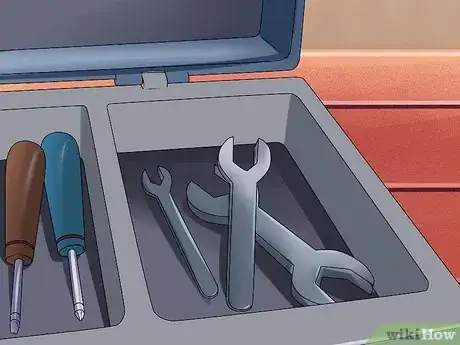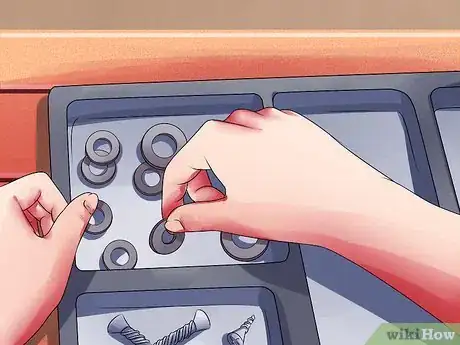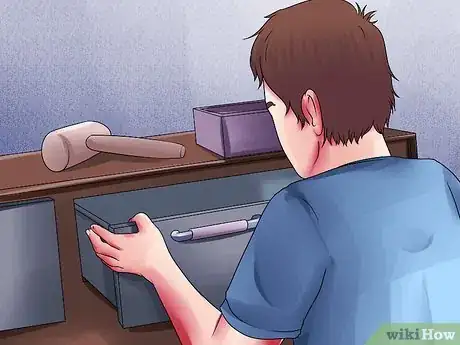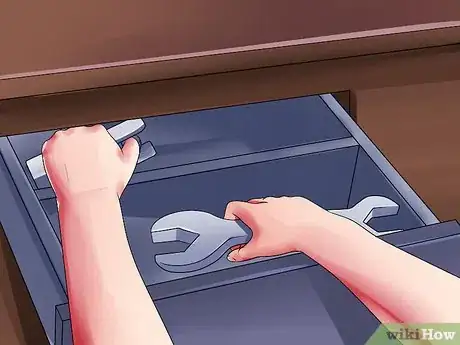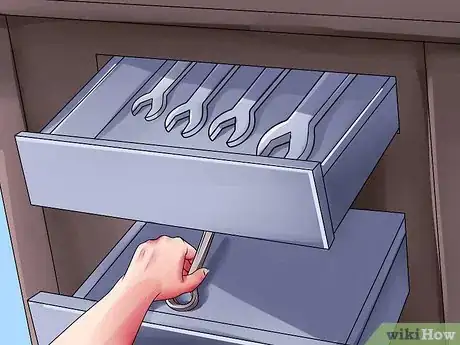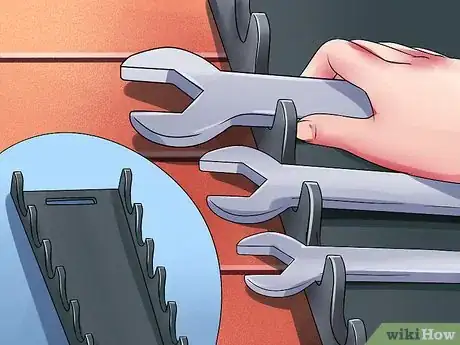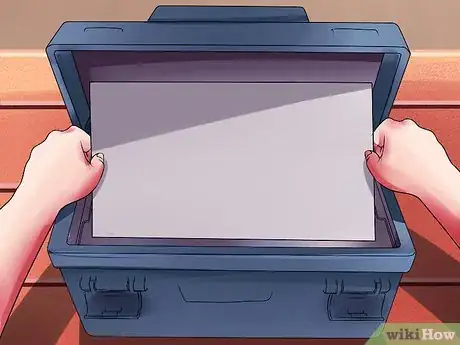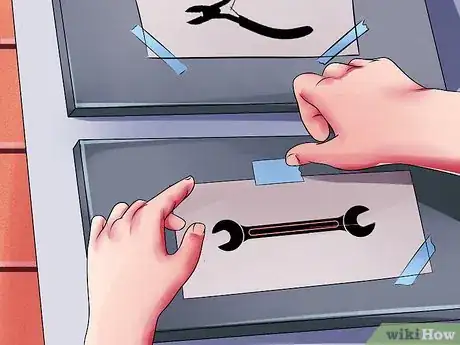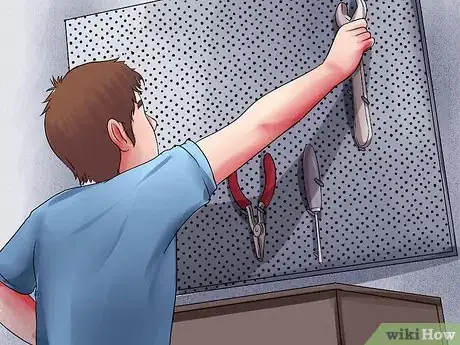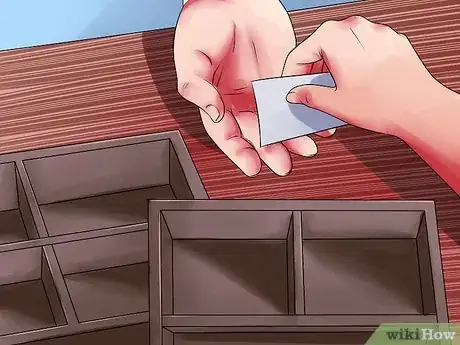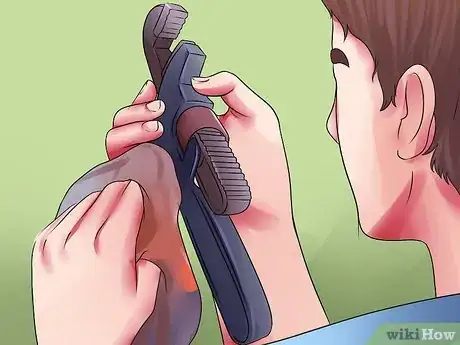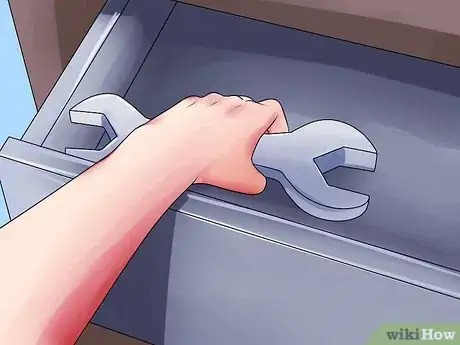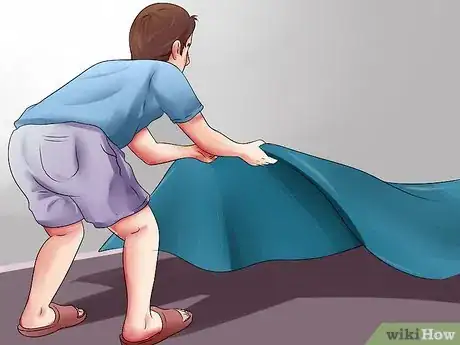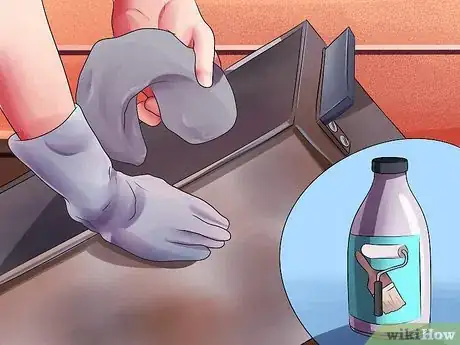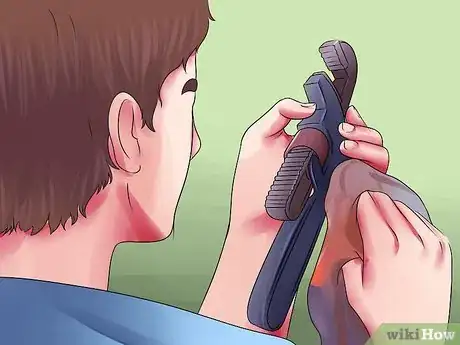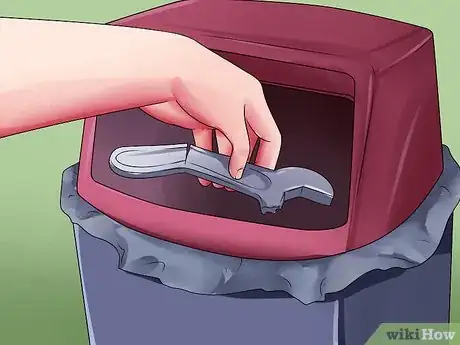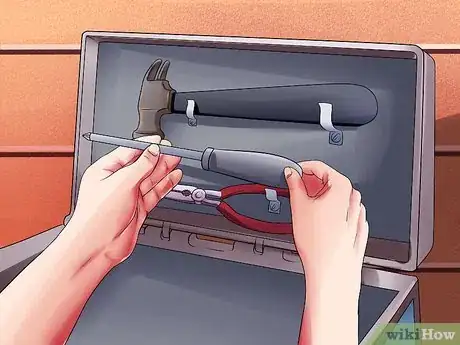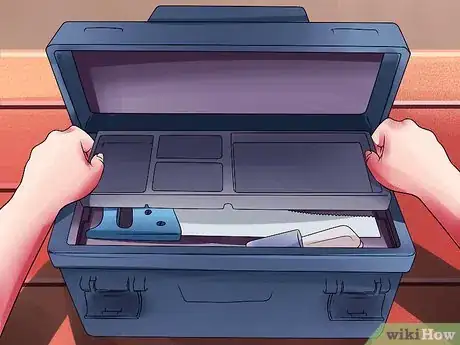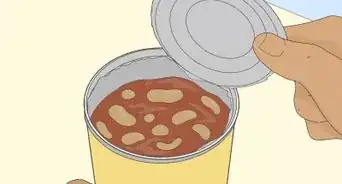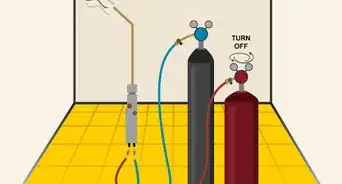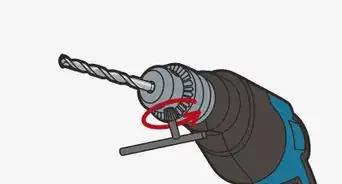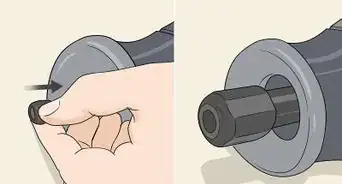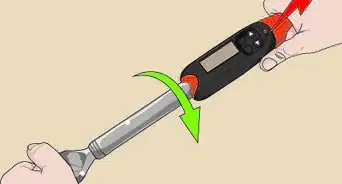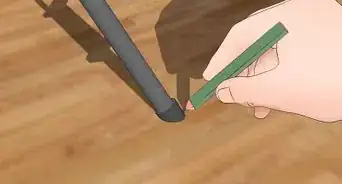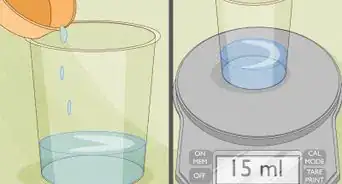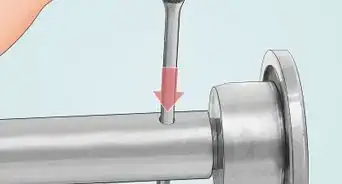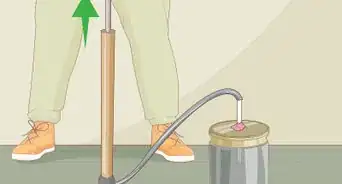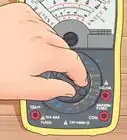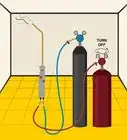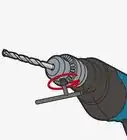This article was co-authored by Robert Rybarski. Robert Rybarski is an Organizational Specialist and Co-Owner of Conquering Clutter, a business that customizes closets, garages, and plantation shutters to ensure organized homes and lifestyles. Robert has over 23 years of consulting and sales experience in the organization industry. His business is based in Southern California.
There are 8 references cited in this article, which can be found at the bottom of the page.
This article has been viewed 83,868 times.
A messy toolbox makes for a messy job. If you've got a greasy, grimy, and altogether disorganized toolbox, you can learn a few concrete strategies for getting it cleaned up and making your work day a whole lot easier. Start by cleaning it out, assessing what you've got, then reorganize in a smarter way. Done properly, you can learn to clean your toolbox and keep it clean for good.
Steps
Organizing Your Toolbox
-
1Keep like with like. There's no one way to organize a toolbox, but the best way to get started is to create piles, placing like tools with like tools. How you choose to do this will be up to you, and it will depend on the tools you've got in your collection, but there are a few good strategies to keep in mind as you're sorting. In general, though, you just want to keep tools that belong next to one another next to one another, so you don't have to dig through a complete mess to find what you're looking for.
-
2Sort by function. In one area, keep fasteners like screws, bolts, washers, and anything related to securing one thing to another in its own little tray. Keep your screwdrivers in one drawer and keep your wrenches in another. Pair the function of the tools with the location of the tools.[1]Advertisement
-
3Sort by project. If you specialize in a few common projects, then you might assign drawers, shelves, or individual boxes to their own project. If you always need your grease gun and your socket set at the same time, keep them in the same drawer. If you always need your plumber's wrench and your Philips set at the same time, keep them together.[2]
-
4Sort by popularity. Put your most frequently used tools at the front and put less frequently used tools toward the back, where you won't have to worry about them. Alternatively, you could even assign separate drawers or boxes for "most common" and "least common," to create miscellaneous categories that you'll know to look in.
-
5Separate standard and metric wrenches. For sockets and basic wrench sets, if you've got multiple sizes and increments, it can be a real pain to dig through an unorganized drawer trying to look for the right one. Separate them into separate locations to make finding one a lot more quick.[3]
-
6Keep storage sockets and wrenches on rails if possible. Wrench organizers called rails are commonly sold at hardware stores. These allow you to quickly scan and snap your tools into and out of place. You can even keep them arranged in their proper order, so you won't have to spend a bunch of time scanning for the right one. They're cheap and useful.
- If you don't have a rail or don't want them, try to bundle loose wrenches in an old rag or a small sack for your portable box. At least they'll all be in the same place and won't be rattling around loudly.
-
7Line the bottom of the portable toolbox with cardboard. If your tools are grease-magnets, lining the bottom of the box with a piece of cardboard will help to soak it up and keep it from dirtying your tools and even dripping out of the box. It's a crude method, maybe, but it works.[4]
-
8Label everything. Get out a permanent marker and some masking tape and start labeling every drawer, every box, every little thing in which you've hidden something. The first couple of weeks after a big reorganization can be the most frustrating, and you'll make it a whole lot easier on yourself if you clearly mark everything in your workshop and make it easy to identify.
Staying Organized
-
1Hang duplicate tools on pegboard. It's easy to get locked into a serious tool collection. If you're the kind of person with three of the exact same screwdriver, just in case you lose one or someone needs an extra, it can make organization a challenge. Separating extras from your primary use tools, though, is a good way of clearing up the mess and making your workspace a lot more manageable.
-
2Buy some organization trays for miscellaneous stuff. In general, it's a good idea to invest in a few little storage trays at the hardware store to keep things like screws, nails, and other tiny fasteners you might not want to part with. It's great to have that stuff on hand if and when you need it, but finding a place for it is a challenge.
- Alternatively, save old milk jugs, coffee cans, and other little containers for keeping screws and other fasteners in. Make sure you mark them clearly. If you keep them small enough, you can even pop them into your portable box when you need them for a job.[7]
-
3Clean up tools after using them. Imagine your grandfather's coming to visit tomorrow and will want to look through your toolbox. Avoid the lecture and always remember to put your tools away clean. If they work for you, work to take care of them.
- Use a rag to wipe oil and grime off of tools, then place them in their assigned places. You don't have to scrub them, but cleaning them up a bit will keep your tools from rusting and losing life.
-
4Put tools back immediately. When you're done using a wrench, don't just toss it on the ground to worry about later. Put it away if you're done using it. It's easier to clean up as you go along rather than trying to clean up a big mess at the end of the day. That's when it gets tempting to just throw a wrench wherever, toss a file in with the screwdrivers, and start making a mess. Don't let yourself recreate the mess you got rid of. Head it off at the pass.
Getting Organized
-
1Lay out a big tarp or cardboard in the driveway. Whether you’re reorganizing a drawer storage box in your garage or cleaning out your portable box, the best way to get started is just to dump everything out and assess what you’ve got. If you're seriously disorganized, lay out everything in a pile and start to go through it slowly.
- If you’ve got an especially cluttered or greasy toolbox, it’s usually a good idea to lay down some kind of barrier so you won’t make a mess. Some old cardboard works fine, or a tarp if you can spare it. It's usually best to do it outside in the yard or on the driveway, rather than on the kitchen table.
-
2Clean your toolbox thoroughly. When you've removed everything from it, take the opportunity to give your toolbox a good scrubbing. It's common to use a little dab of paint thinner to cut through the serious grease, if you've been working on cars, or a lighter wipe-down is fine if it's not as dirty. It doesn't need to be spotless–you're not eating off it–but it'll be easier to stay organized if it's clean.[8]
- If you're using acetone to clean up your tools, make sure you're in a well-ventilated area and take frequent breaks to make sure you're not getting lightheaded.
-
3Clean and assess each tool individually. Examine each one of your tools and clean them up as you work. Use the same rag and some paint thinner to scrub grease off of your tools.[9] Make sure that your tools are still in good working order, free of rust and other imperfections. Make certain that your tools still work properly, that all socket wrenches still have well-greased action and good motion, that adjustable wrenches still adjust properly, and that any other tools work as they're supposed to.
-
4Throw out everything that’s broken or in disrepair. Start by throwing out loose screws, washers, and nails that are serving no purpose. If any of your tools are broken or rusted beyond easy repair, discard them. Get rid of anything that's just taking up space.[10]
- Hang onto things you can identify, if you want to. If you're struggling with a big hoard of little fasteners and other bits, though, it might be a good idea to start clearing things out. Good rule of thumb: if you can't identify it, put it in the garbage.
-
5Only hang onto the essentials. What absolutely needs to be in your toolbox? Make sure you have the most basic tools on hand for quick repairs. Depending on your purposes and your projects, most people will need, at the very least, a screwdriver set with both flat-head and Phillips screwdrivers of a variety of sizes, a good quality hammer, a wrench set, a pair of pliers, a tape measure, flashlight, utility knife, gloves and safety glasses. A carpenter's level and an electric drill are also important basic tools, but might not fit in most portable toolboxes.[11]
-
6Assess your toolbox needs. Examine the toolbox you've been using and get honest with yourself. Are you trying to keep ten pounds of tools in a nine pound bag? If so, it might be time to upgrade. Once you've combed through your tool collection, decide what you need to work with. For most people, even people will fairly large tool collections, a single portable toolbox with the most popular tools plus one draw-style storage box should be plenty sufficient.
- Use a small primary toolbox that’s easy to manage. It’s better to get a smaller unit to start with and then add as you acquire more tools. You don’t need a massive tool chest that you could live in that’s going to sit around half-empty.
- Buy a larger drawer-style toolbox to store your bigger tools and inessential items securely. Choose one that comes with a tray on top for bits, screws, and other items. This is a handy place to put these small items when you are working on a project so they aren’t lost.
References
- ↑ https://www.garagetooladvisor.com/storage/how-to-organize-tool-chest-like-pro/
- ↑ https://www.youtube.com/watch?v=rTT9hj7MbSc
- ↑ https://www.youtube.com/watch?v=rTT9hj7MbSc
- ↑ https://www.youtube.com/watch?v=vo1aD6SpcS0
- ↑ https://www.garagetooladvisor.com/storage/how-to-organize-tool-chest-like-pro/
- ↑ Robert Rybarski. Organizational Specialist. Expert Interview. 31 January 2020.
- ↑ http://www.doityourself.com/stry/how-to-organize-your-toolbox-for-maximum-efficiency#b
- ↑ http://www.almanac.com/content/organize-and-clean-your-toolbox
- ↑ https://www.nytimes.com/1996/10/27/nyregion/how-to-use-and-apply-the-many-varieties-of-solvents.html
About This Article
To organize a toolbox, try separating your tools into piles based on their function. For example, you can have a pile for fasteners, a pile for screwdrivers, and a pile for wrenches. You can also sort your tools by project by keeping all the tools you need for projects that you regularly do in the same spot. Whichever method you use, put your most frequently used tools at the front of your toolbox and less frequently used ones in the back. Also, use marker and masking tape to label each section in your toolbox so you know where everything goes. To learn how to clean out a toolbox before organizing it, keep reading!
